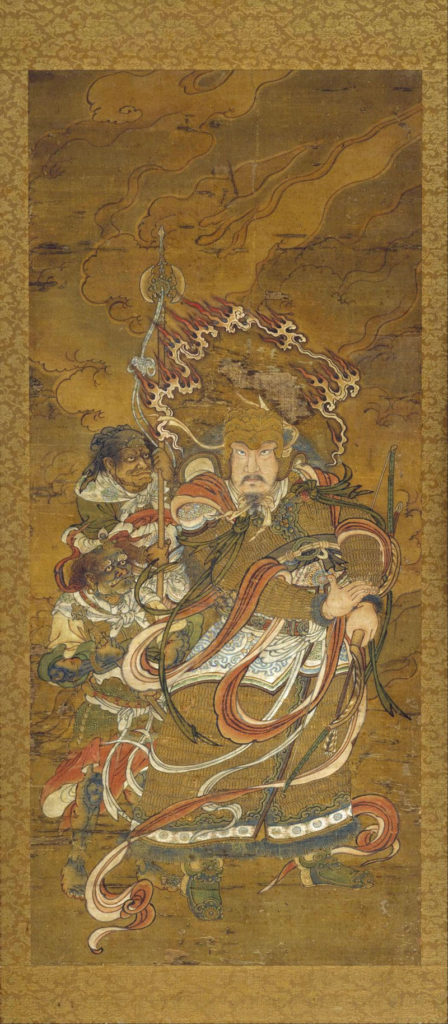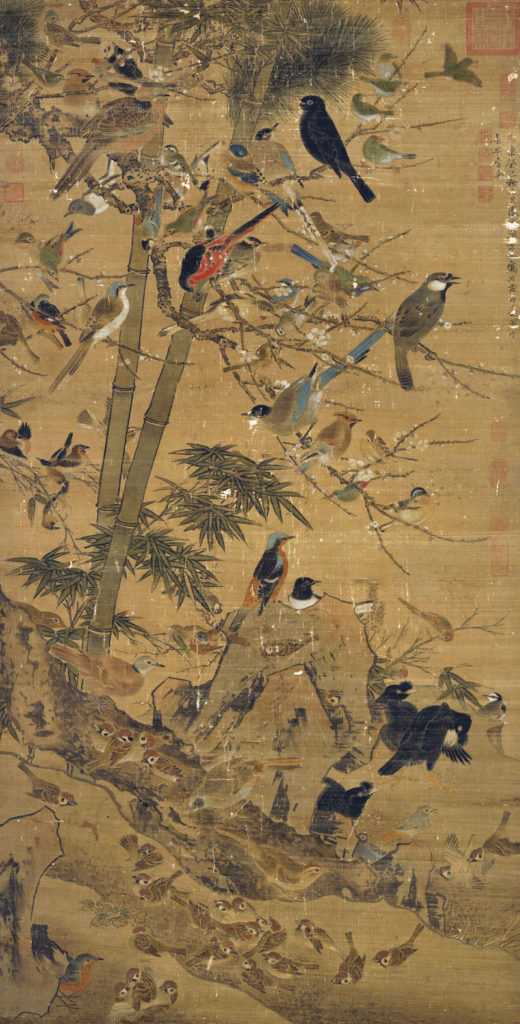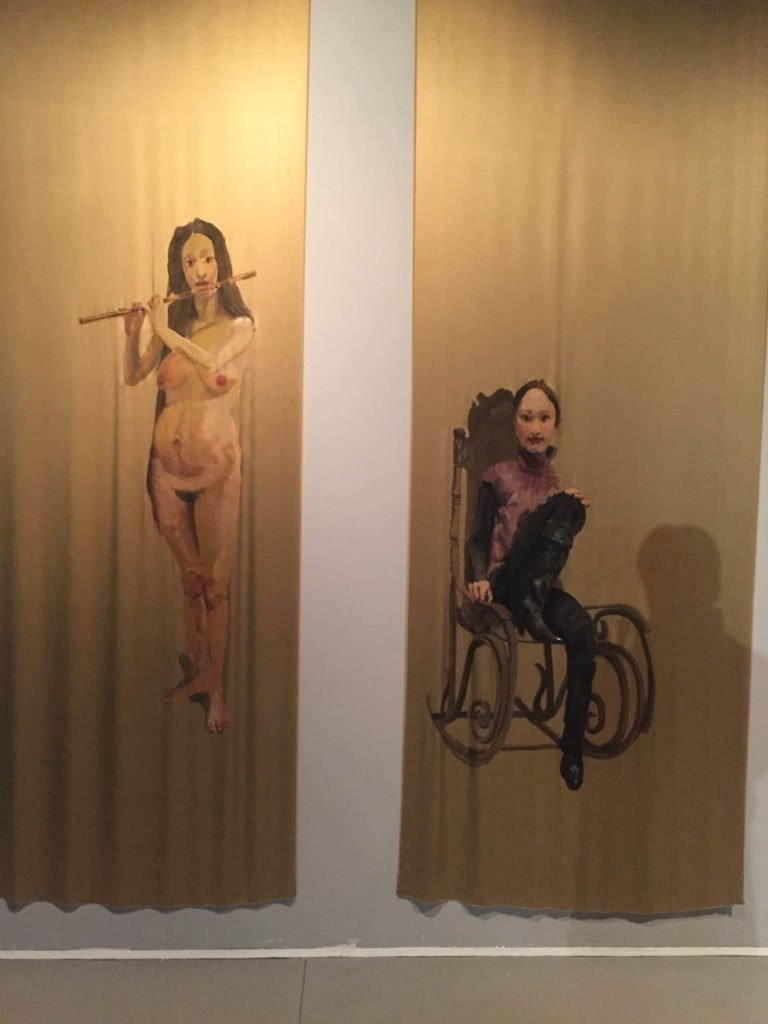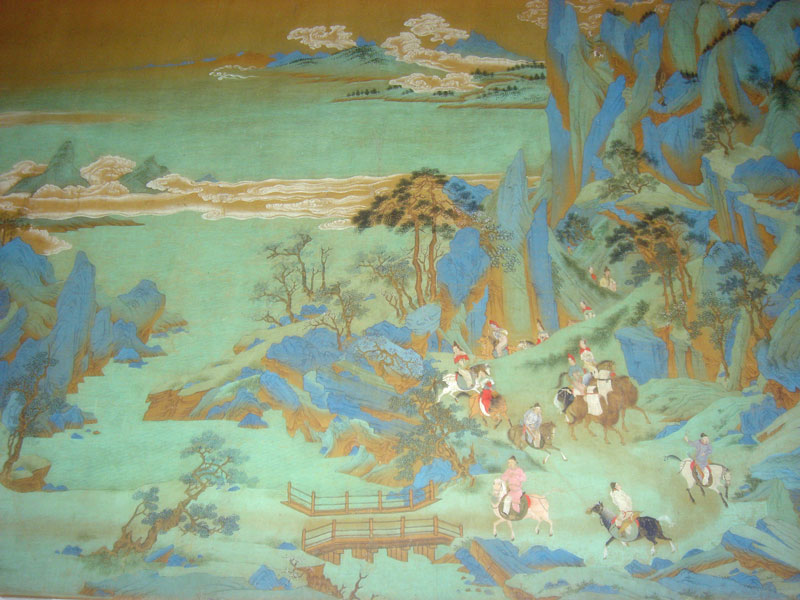The Art of Chinese Silk Painting
From a landscape portrayal of life in a merchant town to depicting gorgeous characters clad in traditional gowns and dresses, Chinese silk art ranges in its style and character but retains an overpowering element of elegance and uniformity. The art style of silk painting is one that had originated centuries before and overtime, the development of this artistic style has been marked with great respect by Chinese artists. The fundamental work of creating a silk painting may seem simple but it includes incredible meticulousness that can only be honed through time and practice – something which also makes this artistic style quite unique around the world.

Practitioners of traditional Chinese silk painting historically followed a process of preparing their own silk clothes by grinding the cloth with a stone until the texture was smoothened out. They would later use brushes made with animal hair along with paint mixtures derived from various natural elements to create their own works of art. Some of these artworks are now marveled at museums and written in history books while others remain at the cohort of historians and art researchers.
The modern Chinese silk paintings have developed in terms of better tools and larger availability of colors and resources. However, there still remains a tinge of traditionality within these modern paintings as contemporary artists cleave on to the same process followed by their ancestors.
The History of Chinese Silk Painting
Most art historians believe that the Chinese silk painting was incepted during the Warring States period in 476 BC. But for concluding that the artistic style gained prevalence in the time of the Western Han Dynasty in 206 BC.
Silk paintings were highly coveted in history, with most emperors commissioning artists to create their own silk painting to be hungover in their courts. This is understandable as silk was considered to be the purest and most valued material in those time periods.




Due to a lack of tools and colors, the original silk painting would not have as many details as the paintings in ink-wash technic or Guo Hua that came later on. Artists found better colors and optimized on the technique used for creating silk paintings. Enabling them to draw human figures as well as integrate unique characteristics to represent monsters and mythological beasts. These paintings gradually gained meaning in its art form as artists began depicting famous religious analogies and portrayals of myth and fables.
Following the end of the 2nd century AD, Chinese silk painting started to convert into a trading commodity with many people around Europe and across Asia wishing to have their own versions of such painting. This trade was brought into its height during the Crusades’ conquests as Europe began to mass-produce silk. Here, silk painting began establishing itself within European lives and currently, art enthusiasts will find large availability of Chinese silk paintings all across Europe’s continent.
How a Silk Painting is Created
There are two ways of creating a silk painting and these are the Gongbi technique and the Shuimo technique. Gongbi roughly translates to meticulousness, which is aptly termed for how effortful the work is in nature. An artist will require a detailed brushwork to create a Gongbi-style silk painting while Shuimo simply follows a monochromatic palette to create impressionistic artwork.
While creating a Gongbi painting, an artist will have to manufacture a few of their own resources. For example, the Chinese ink which will be used to draw the base structure of the painting will be made with a mixture of ground and water. While another solution is made from glue and alum to act as a sticking agent for the pigments to settle on the silk fabric.




It should be emphasized that the work can only be done by someone with continuous practice and an incredible passion for art. When the alum-glue solution is spread over the silk cover, any ink that falls over will be permanently absorbed and cannot be removed. Therefore, there is no space for mistakes in this artwork, but only meticulousness and methodology.
Varying pressure levels create denser or lighter levels of brushstrokes. To execute this work, one needs to know their craft fully and confidently. After the ink has been applied and the base layer created, next comes the stage of applying pigments and offering color to the painting. The work can be completed soon after this process.
Finally, here you can watch a short film about how to make a Gongbi painting:
A Tradition To Be Preserved
It is undoubtedly that Chinese silk painting has come from a long line of artistic endeavors and a tradition that has largely remained intact. While the painting technique and tools have evolved over the ages with economic and cultural development, the process still corresponds with the intense delicacy and passion that prehistorical artists had maintained in their own work.
Therefore, the perseverance of Chinese silk painting through time and numerous empirical dynasties only signify how valuable the craft truly is. It’s a work that is not defined by its content but the amount of effort and the overall quality of elegance that it maintains. In an age subdued with technology and advancement, the prevalence of Chinese silk painting today marks how tradition should still be preserved within us.
Luckily there are new Chinese artists that interpret the old way of Chinese Silk Painting for example well-known artists like Yu Hong who painted the below paintings on Satin for an impressive show at MOCA in Shanghai 2018.






Like our story about the Chinese Silk Painting? Follow us on Facebook and Instagram.


